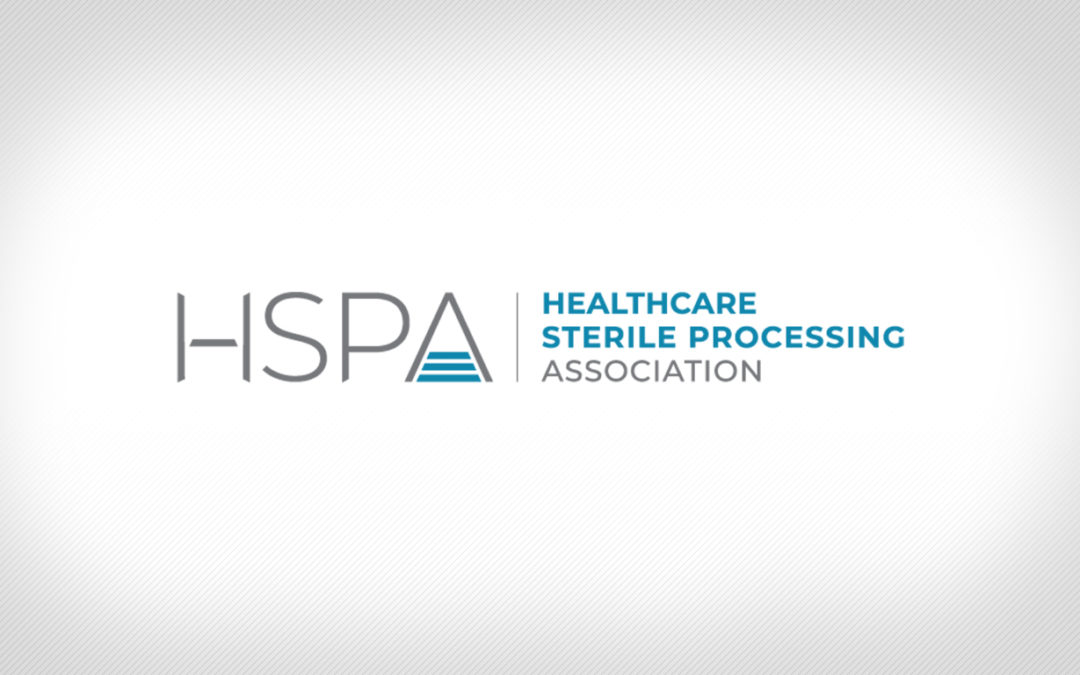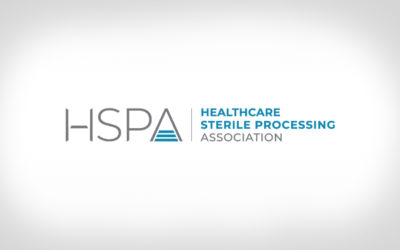
By Monique L. Jelks, BA, MSOL, CRCST
It’s 8 a.m. on Tuesday morning at General Community Hospital in Anywhere, USA. The announcement comes over the hospital intercom: “Good morning! General Community Hospital welcomes The Joint Commission.” Following the announcement is the panic and scurry of hospital employees, some of whom disperse to obscure areas in their departments in hopes they are not called on by surveyors to answer any questions. Why do we panic this way? After all, we follow regulatory requirements (law), standards and guidelines, manufacturers’ instructions for use (IFU), and our hospital’s policies and procedures – or do we? What happens when we don’t?
Last-minute plans and pressures from leaders to “get ready” when a facility enters the window of an accreditation survey instills fear and reduces confidence in many health care workers. The bottom line is no one wants to be the person who gives the wrong answer or demonstrates a process that led to a citation because of the potential harm to patients, staff or visitors. One example of last-minute pressures is the leadership announcement on Friday stating accreditation surveyors will arrive on Monday. Such announcements prompt swift action but leave health care employees hustling to get ready. Many employees work overtime to review and clean up data, purge, organize and stock departments as though they are putting their homes up for sale. When this weekly hustle is met with a “no-show” accreditation survey that following Monday morning, the same announcement is made the following week, and again after that, until the surveyors finally arrive. When the scrambling and subsequent waiting occurs, the mindset of many health care workers shifts from “get ready” to “let’s just get it over already.” The practice of getting ready in place of staying ready is a result of unsustainable processes.
Sterile processing departments (SPDs) are recognized as a vital partner in infection prevention and control; therefore, the SPD has become an increasingly important department for surveyors to evaluate. The type of health care facility will determine which accreditation organization will conduct the survey. The Accreditation Association for Ambulatory Health Care (AAAHC) and The Joint Commission (TJC) are just two accreditation agencies approved by the Center Medicare and Medicaid Services (CMS) to evaluate the quality of work and services provided to patients within health care facilities. These accrediting agencies evaluate processes and procedures to determine if health care facilities are compliant with laws, standards, guidelines and professional recommendations, instructions for use (IFU) and the facility’s own policies to keep patients safe.
One way to develop sustainable, high-quality processes and service in sterile processing is to develop and implement a continuous quality improvement (CQI) program. Developing a CQI program should follow a team approach to attain buy-in and successful outcomes.¹ An effective CQI program should include education and quality audits that will support people and improve processes continuously.
EDUCATION ESSENTIALS
Education is the foundation for successfully developing sustainable processes that produce high reliability for quality trays and services. Education requires knowledge of industry standards and relevant resources to support the ever-evolving, technical world of sterile processing. Developing the education component for the CQI program starts by documenting a learning agenda, which helps to organize and prioritize education plans.²
The learning agenda should outline all reprocessing areas within the sterile processing department (SPD). All SPDs have three basic areas: decontamination, preparation and packaging (prep & pack) and sterilization (note: additional areas, such as high-level disinfection and case cart processing, will need to be added to the outline). Once the outline is documented, it is necessary to add the educational plan for each area. The education plan should cover process steps and automated equipment. Process steps are the sequence of steps technicians perform to achieve the desired outcome in a particular reprocessing area. For example, in decontamination, the first step in the process may be to receive contaminated trays, and the final step would be loading the washer or pass-through window. When planning the education for process steps, clear communication and understanding should be provided for which professional recommendation is being followed – such as the Association for the Advancement of Medical Instrumentation (AAMI) or Association of periOperative Registered Nurses (AORN). For the education plan to be effective, knowledge of regulations, standards and other professional recommendations, manufacturers’ IFU, and the facilities policies must be included in the plan for each respective area. Automated equipment, such as steam sterilizers and ultrasonic machines, will require education on the manufacturer’s IFU. No matter the reprocessing area, a review of the facility’s policy should be part of the education plan.
Developing the education piece of the CQI program is the simple part. Implementing a CQI program is where the challenge begins for many SP leaders. Many SPDs function without a dedicated department educator, making it even more challenging to implement a successful CQI program. For departments without a dedicated SP educator, the department’s leaders must find creative ways to implement educational sessions. This is where the perfect opportunity presents itself to collaborate with infection control professionals (IP) within the facility. Infection prevention and the SPD both share the mission of preventing the spread of infectious microorganisms. Many IP professionals help to write facility policies and can reliably navigate regulatory standards to ensure SP is compliant with standards.
Another creative way to implement a successful CQI program without a dedicated educator is to enlist shift leaders and frontline technicians to host education sessions that focus on the area where they are high-quality performers. Allowing high performers an opportunity to share their knowledge and shine can help to build a stronger team that fosters encouragement and engagement and leads to a sustained culture of learning and sharing.
Education must also be provided routinely, not merely as a result of a poor outcome. Currently, many SPDs follow an annual educational plan, with the entire department provided with refresher education about certain aspects of sterile processing. The concern with this limited approach is that it’s fleeting. The annual plan is reflective of the tri-annual survey visit where nothing is done to ensure standards are maintained until the announcement is made that “The Joint Commission is coming!” SPDs that follow the annual education plan may only receive additional education when a new instrument, device or equipment is purchased or when something goes wrong that requires a review of process steps, policies and IFU. Routine education, on the other hand, can reduce the risk of failure and poor outcomes.
Education should be viewed and managed as an investment process that yields high-reliability outcomes continuously.³ Educated technicians are confident technicians who perform reliably and consistently. To change the culture from “get ready” to “stay ready,” the architecture around education must change. Scheduling routine educational sessions (weekly or monthly) is an effective way to develop confident technicians and a culture of learning and sharing that is necessary for maintaining continuous quality improvement.
QUALITY AUDITS CRITICAL
We must remember that we can’t improve what we don’t review. Measuring the effectiveness of education is done by inspecting the quality of work after learning. Effective learning leads to high-quality outcomes and better problem-solving skills.²
Conducting audits is about seeking to understand compliance.¹ Are we highly reliable and compliant or are there process deviations and opportunities for education? Some of the best technicians can misunderstand processes and, in return, teach their misunderstood process to another technician, which leads to a standard deviated process. Performing routine audits is the key to a “stay ready” culture.
Process and product audits are two types of audits that can be performed in the SPD to ensure processes performed and products produced are of the highest standard and quality to keep patients safe. Process audits entail observing technicians while they perform processing steps. Product audits involve inspecting sterile devices/trays before they leave the SPD. Audits should remain simple. This can be done by creating a checklist of all important factors to confirm compliance for each reprocessing area and for each type of sterile package. A sterilization process audit checklist, for example, may include the biological test documentation step to confirm the biological test and control have the same lot number. The product audit check-sheet would require the inspection of various package types (rigid, wrapped, pouched) and sterilization method. This checklist may also include compliance factors such as proper placement of external and internal indicators, cleanliness, organization and accuracy of tray contents. Audit results should be shared, and the positive outcomes must be celebrated to maintain engagement.¹ How often audits are done and who performs them will depend on the level of productivity and leadership structure.
CONCLUSION
Preparing for an accreditation survey must never be done in a panic or at the last minute. SP leaders should aim to change the culture of their department from “getting ready” to “staying ready” by developing a successful CQI program where education and audits are in place to a culture of continual learning and sharing, and where technician confidence, encouragement and engagement are promoted and celebrated.
– Monique L. Jelks, BA, MSOL, CRCST, serves as Sterile Processing Educator for Georgia’s WellStar Douglas, West Georgia, Acworth, KUP, East Cobb, Windy Hill & Paulding Hospitals. She is also the current president of the Healthcare Sterile Processing Association.
References
- Brenig-Jones, M., & Dowdall, J. (2018). “Lean six sigma for leaders: A practical guide for leaders to transform the way they run their organization.” Wiley.
- Watkins, M. (2023). “The first 90 days: Proven strategies for getting up to speed faster and smarter.” Harvard Business Review Press.
- Greene-Golden, S., Cherry, K., Price, L., and Combs, S. (2018) “WI.L.D. What I Learned During the Pandemic.”








